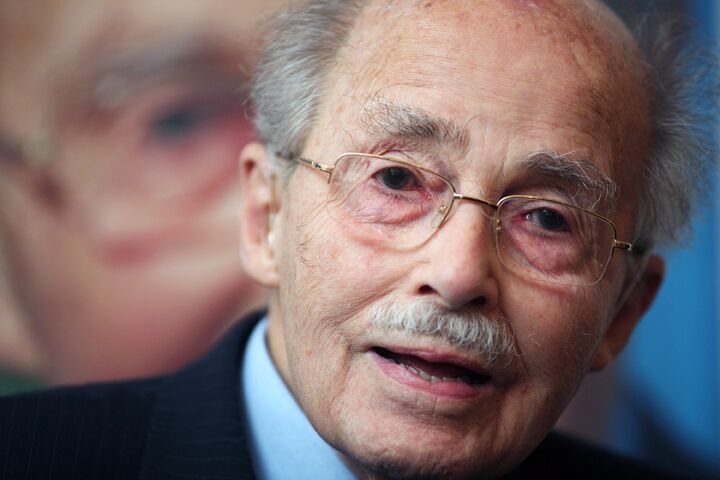
Habsburg—Heir to an Empire Dies
Imperialist, Roman Catholic to the core, ever the supporter of pan-Germanism and European union, Otto von Habsburg, the last official emperor of the old Austro-Hungarian Empire before he renounced all titles after World War ii, died on July 4.
Habsburg settled in Bavaria after the war, joined the Christian Social Union and—following encouragement to do so by former strong man of Europe, Franz Josef Strauss—became a member of the European Parliament. He was the only serving member of that body to have been born prior to World War i. He thus was able to see the dream of German and European union in a uniquely historical context.
This drove him to strive for a personal goal: to see every country in Europe, east and west, that had been headed by a royal dynasty pre-World War i, become part of the European Union. He lived to see that goal fulfilled. In this sense at least, Otto von Habsburg was instrumental in setting the scene for a biblical prophecy that is even now taking place before our eyes—the division of an east-west union of European nations into 10 specific regions ruled by 10 kings (Revelation 17:12-13).
Denied the opportunity for any imperial aspirations that he may have held by virtue of his inheritance of the emperor’s title upon the death of his father, Habsburg set out an alternative vision for a Christian-socialist federation of European states in his book titled The Social Order of Tomorrow. The book is based on a series of lectures he delivered in November 1956, only four months before the signing of the Treaties of Rome that formalized the beginnings of that which we know today as the European Union.
In his book, Habsburg postulated that “a European political community is an absolute necessity.” He foresaw the creation of a single constitution for the EU. He lived to see the creation of the European political community via the Maastricht Treaty and the creation of a European constitution, presently known as the Lisbon Treaty.
Otto von Habsburg was the quintessential European visionary. What he foresaw in 1956 was reality by the time of his death. That is, all but one part of that vision: He had predicted a great religious revival in Europe, a Europe actually heeding and responding to the calls of Pope John Paul ii and Benedict xvi for a great evangelizing of Europe to become a reality.
Though that part of his “social order” for Europe is not yet realized, Vatican watchers are aware that it is well advanced in its planning stage. It awaits the grand crisis in Europe that will turn Europeans back toward what was the state religion during successive resurrections of the Holy Roman Empire—the religion of Rome—and turn they will.
In his day, Herbert W. Armstrong had contact with the visionary Otto von Habsburg, and that strong man of European politics of his day, Franz Josef Strauss. Both are now gone from the scene, but their dream of both German unification and a united European political economy remains. It has always been strong in Bavaria, where both these men of powerful influence lived.
It is a dream shared and perpetuated by such Bavarians as the elder statesman Edmund Stoiber and the as-yet-still-most-popular political personage in Germany, despite his current withdrawal from active politics, Karl-Theodor zu Guttenberg, baron of the Holy Roman Empire. The one is a seasoned and accomplished politician, the other an aristocrat possessing impeccable connections in the upper echelons of European society, especially the dynasties that once ruled the nations of Europe. What a formidable team they would make if they were ever brought together at the forefront of European politics.
Conceivable? Perhaps, especially if one other powerful Bavarian were to join with them in support: Joseph Ratzinger, the pontiff of Rome. Such a team would set the capstone on the grand vision of Otto von Habsburg’s “social order of tomorrow.” It would, in fact, present an ideal team to lead a resurrection of the old Holy Roman Empire.
The economy, the bureaucratic, political, judicial and financial institutions are in place for such an entity. It has its constitution. Its military industries and battle groups are in advanced stages of consolidation. But the glue to bind it together—the religious ideology, that “opiate of the masses”—is not yet truly fashionable, and the political leadership to activate such an entity has yet to materialize.
Still, it must be admitted that Otto von Habsburg’s dream is all but accomplished. Now we wait and we watch—watch for the crisis that will turn the masses to Europe’s old icon of the crusading cross, heeding the rallying cry of a singular charismatic political leader in concert with the vicar of Rome. It may all come together sooner than you think!
Habsburg’s vision for Europe was grand indeed. Yet it is no match for the vision that Herbert Armstrong had by virtue of the revelation of Bible prophecy. When he spoke with Strauss and Habsburg, it was with that great revelatory vision contained in the prophecies of Daniel and Revelation in mind. Those prophecies spell out, step by step, the final rise of the old Holy Roman Empire. It is that vision which is so well advanced in its actual fulfillment as to be actually seen in all its prophesied detail, in action on the world scene today.
